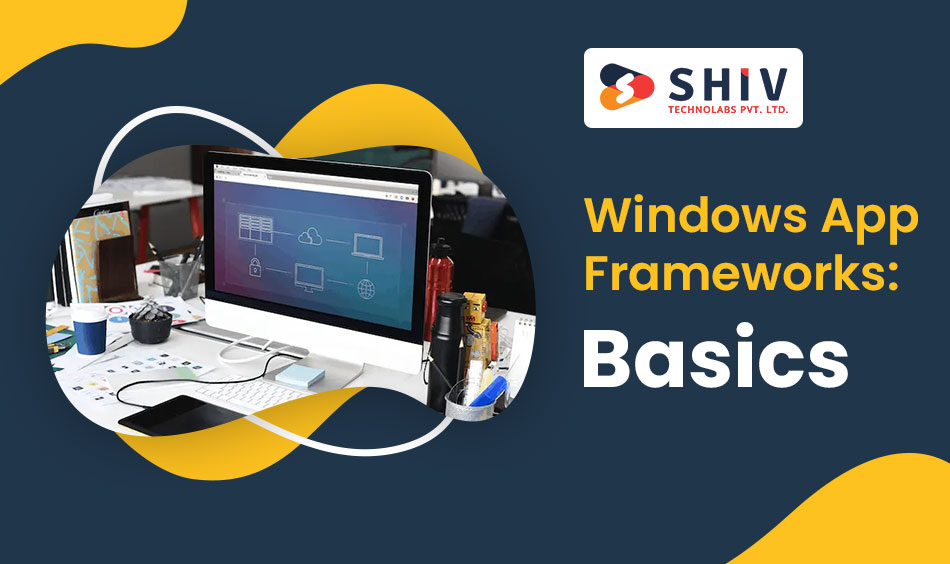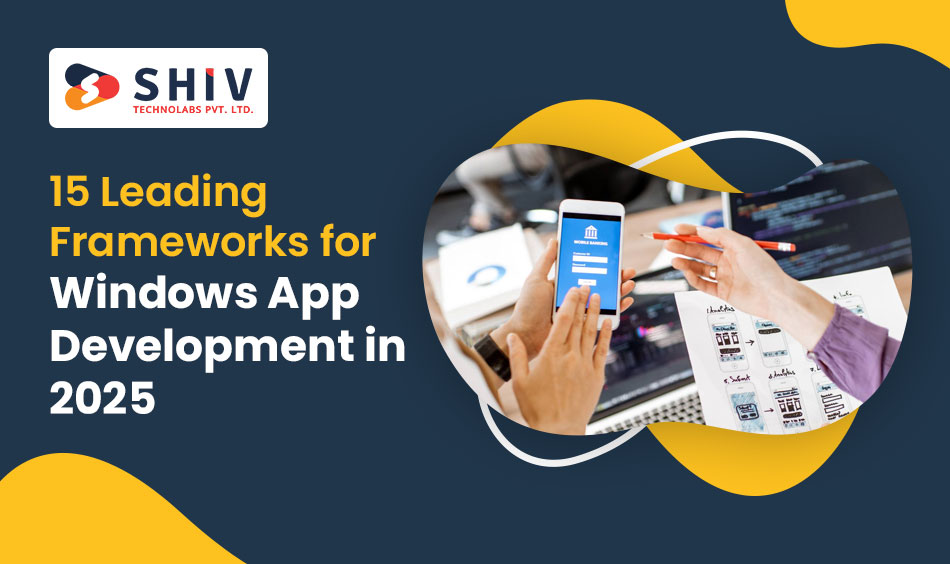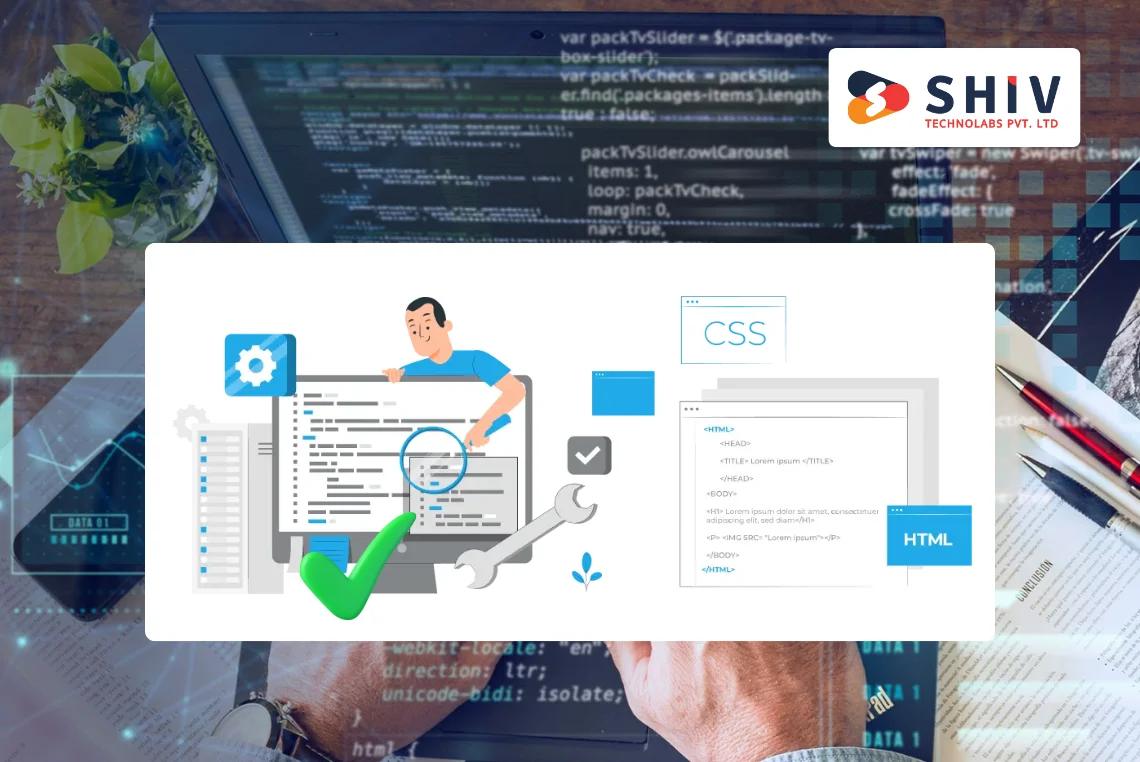Table of Contents
Windows app development has grown significantly, with developers striving to create efficient, modern applications. Selecting the right Windows app frameworks for development is key to building applications that are functional, reliable, and user-friendly. This guide highlights the top frameworks for 2025, focusing on their features and practical uses.
Windows App Frameworks: Basics

Windows app frameworks for development are tools, libraries, and components that help make building applications for the Windows operating system easier. These frameworks offer pre-made resources for activities such as designing an application’s user interfaces, implementing backend operations, and ensuring compatibility across systems.
By using these frameworks, developers can shorten development time while producing robust and efficient applications. From creating intuitive user interfaces to integrating databases, these frameworks are essential for modern app creation.
Why Choosing the Right Framework is Important for Your Project
Choosing the right framework is a critical step in Windows app development because it determines the efficiency, scalability, and success of your project. A well-suited framework provides pre-built tools, streamlines coding, and accelerates timelines, ensuring faster development without sacrificing quality.
# Key Benefits of the Right Framework
1. Improved Efficiency: Frameworks like .NET and UWP offer libraries and tools that reduce repetitive coding, allowing developers to concentrate on what matters most.
2. Scalability: A scalable framework like MAUI or Xamarin makes sure that your application grows with your business whether in terms of features expansion or larger users.
3. Enhanced Performance: Frameworks like WPF or Flutter deliver smooth, responsive apps that meet user expectations.
4. Cross-Platform Support: Tools like Uno Platform or Electron allow developers to create apps for multiple platforms using a single codebase.
5. Security: Reliable frameworks such as Tauri prioritize security and ensure that applications handle sensitive data safely.
Frameworks tailored to your needs simplify maintenance, reduce development costs, and support future updates. Partnering with a trusted Windows Application Development Company, like Shiv Technolabs ensures access to expert guidance, enabling businesses to deliver high-performing, scalable solutions efficiently.
Selecting the right framework shapes the success of your application, driving better outcomes for both users and businesses.
15 Leading Frameworks for Windows App Development in 2025

Windows app development continues to evolve, with developers and businesses seeking frameworks that offer flexibility, performance, and scalability. Below is an in-depth look at the top frameworks for Windows app development in 2025, detailing their features, advantages, and ideal use cases.
1. .NET Framework
The .NET Framework is a mature, versatile platform widely used for building reliable Windows applications. It supports multiple programming languages, including C#, VB.NET, and F#, providing developers with flexibility in choosing their preferred language.
Advantages:
- Extensive libraries and tools for rapid development.
- Backed by Microsoft, ensuring regular updates and security patches.
- Ideal for enterprise-grade applications requiring robust performance and scalability.
Best For: Complex, high-performing desktop applications and large-scale enterprise projects.
2. UWP (Universal Windows Platform)
UWP enables developers to build modern, responsive applications that run seamlessly across a wide range of Windows devices, including desktops, tablets, and Xbox.
Advantages:
- Unified APIs for cross-device compatibility.
- Secure and efficient distribution through the Microsoft Store.
- Access to modern Windows features, such as Fluent Design.
Best For: Developers looking to create apps targeting the Microsoft Store and modern Windows devices.
3. WPF (Windows Presentation Foundation)
WPF specializes in creating visually rich and interactive desktop applications. It leverages the .NET Framework and provides developers with powerful tools for crafting advanced UIs, graphics, and animations.
Advantages:
- Flexible layout options and support for custom UI designs.
- Advanced multimedia integration for applications requiring rich visuals.
- Strong performance for desktop apps.
Best For: Apps requiring advanced UI design, custom animations, or multimedia content.
4. WinForms (Windows Forms)
A simple and easy-to-use framework for building Windows desktop applications with graphical user interfaces (GUIs). WinForms is suitable for less complex projects where advanced visuals are not a priority.
Advantages:
- Minimal learning curve, ideal for beginners.
- Streamlined setup and development process.
- Reliable for creating lightweight applications.
Best For: Developers creating straightforward Windows desktop apps with basic functionality.
5. Electron
Electron allows developers to create cross-platform desktop applications using web technologies such as HTML, CSS, and JavaScript.
Advantages:
- Reusable web development skills for desktop applications.
- Large developer community and extensive plugin support.
- Compatible with Windows, macOS, and Linux.
Best For: Developers with web development expertise looking to build cross-platform desktop applications.
Also Read: Building Cross-Platform Apps for Windows Using Flutter: What You Need to Know
6. MAUI (Multi-platform App UI)
Part of the .NET ecosystem, MAUI enables developers to build cross-platform applications with a single codebase. It supports Windows, macOS, Android, and iOS.
Advantages:
- Simplified development process for multi-platform apps.
- Regular updates and support from Microsoft.
- Integration with .NET libraries and tools.
Best For: Projects that require deployment on multiple platforms with shared functionality.
7. Avalonia
Avalonia is an open-source framework for building cross-platform desktop applications. Its XAML-based UI system is similar to WPF, making it a familiar choice for developers.
Advantages:
- Cross-platform support, including Windows, macOS, and Linux.
- Flexible UI customization options.
- The open-source nature encourages community contributions.
Best For: Developers who want WPF-like functionality for applications running across multiple platforms.
8. Qt
A high-performance framework written in C++, Qt is widely used for cross-platform app development, offering advanced tools for GUI creation.
Advantages:
- Excellent performance for resource-intensive applications.
- Extensive libraries for GUI design and other functionalities.
- Scalability for applications requiring complex UIs.
Best For: Developers creating feature-rich applications with advanced graphical interfaces.
9. GTK# (GtkSharp)
GTK# is a cross-platform GUI toolkit that enables developers to create graphical applications using C# and .NET.
Advantages:
- Lightweight and efficient, suitable for smaller applications.
- Straightforward integration with .NET libraries.
- Compatible with Windows, Linux, and macOS.
Best For: Developers seeking a simple toolkit for creating graphical applications.
10. React Native for Windows
A variant of React Native designed for building Windows applications. It allows developers to create native-like apps using JavaScript and React.
Advantages:
- Component-based architecture simplifies development.
- Reusable code for web, mobile, and desktop.
- Active community support for troubleshooting and innovation.
Best For: Developers familiar with React who want to extend their skills to Windows app development.
Also Read: React Native for Offline-First Progressive Web Apps
11. WinUI (Windows UI Library)
WinUI is a modern framework for building native Windows apps. It supports Fluent Design and integrates seamlessly with UWP APIs.
Advantages:
- Modern UI capabilities tailored for Windows.
- Continuous support and updates from Microsoft.
- Backward compatibility with older UWP apps.
Best For: Developers focusing on cutting-edge native Windows applications.
12. Xamarin
Xamarin, part of the .NET ecosystem, enables developers to build native apps using C# for multiple platforms, including Windows, Android, and iOS.
Advantages:
- Single codebase for cross-platform development.
- Native performance and access to platform-specific APIs.
- Supported by Microsoft with regular updates.
Best For: Developers creating cross-platform applications with native functionality.
13. Tauri
A lightweight alternative to Electron, Tauri allows developers to build desktop apps using web technologies with a smaller footprint. It uses Rust for backend processing.
Advantages:
- Smaller application size compared to Electron.
- High-security features.
- Support for modern front-end frameworks like React and Vue.
Best For: Developers focused on lightweight, secure, and efficient desktop applications.
14. CEF (Chromium Embedded Framework)
CEF is a framework for embedding Chromium-based web browsers in Windows applications, ideal for hybrid applications that combine web and native functionality.
Advantages:
- Flexibility for customizing web browser functionalities.
- Robust support for web technologies.
- Ideal for applications requiring rich web content integration.
Best For: Hybrid applications blending web and native capabilities.
15. Delphi (RAD Studio)
Delphi is a rapid application development framework known for creating high-performance Windows apps. Its user-friendly IDE supports visual development.
Advantages:
- Rapid development cycles.
- Extensive tools for GUI and backend integration.
- Proven reliability in building resource-intensive apps.
Best For: Developers prioritizing speed and performance in native Windows application development.
These frameworks offer diverse tools and features to meet various requirements in Windows app development, from simple utilities to complex, cross-platform solutions. Selecting the right framework ensures better performance, efficient development, and long-term scalability for your projects.
How to Choose the Best Windows Application Development Framework for Your Project
Selecting the appropriate framework for your Windows application is a critical decision that influences the project’s success. To make an informed choice, consider the following factors:
1. Application Requirements
- User Experience (UX) Needs: Determine the level of sophistication required in your application’s user interface. Frameworks like Windows Presentation Foundation (WPF) and Windows UI Library (WinUI) offer advanced UI capabilities suitable for applications demanding rich user experiences.
- Device Compatibility: Identify the target devices for your application. If your app needs to run across various Windows devices, including desktops, tablets, and Xbox, frameworks like Universal Windows Platform (UWP) are designed for such versatility.
2. Development Team Expertise
- Skill Set: Assess your development team’s familiarity with programming languages and frameworks. For instance, if your team has experience with web technologies, frameworks like Blazor Hybrid might be advantageous.
- Learning Curve: Consider the time required for your team to become proficient with a new framework. Choosing a framework aligned with your team’s existing skills can expedite development.
3. Project Timeline and Complexity
- Time to Market: Evaluate how quickly you need to deliver the application. Frameworks that offer rapid development tools and reusable components can shorten the development cycle.
- Application Complexity: For feature-rich applications, frameworks providing extensive libraries and tools, such as .NET MAUI, can handle complexity effectively
4. Long-Term Support and Community
- Framework Longevity: Opt for frameworks with strong backing and regular updates to ensure long-term viability. Microsoft-supported frameworks like WinUI receive frequent updates and support.
- Community and Resources: A vibrant developer community and comprehensive documentation can provide valuable support during development. Active communities contribute to a wealth of shared knowledge and resources.
5. Cross-Platform Requirements
- Platform Targets: If your application needs to operate on multiple platforms (e.g., Windows, macOS, iOS, Android), consider frameworks like .NET MAUI, which facilitate cross-platform development with a single codebase.
By carefully evaluating these factors, you can select a Windows application development framework that aligns with your project’s specific needs, ensuring a smoother development process and a more successful application deployment.
Enhance Your Business Operations with Shiv Technolabs’ Windows Application Development Services
Shiv Technolabs specializes in delivering top-notch Windows app development services tailored to boost business efficiency and streamline operations. With expertise in cutting-edge frameworks and a focus on custom solutions, we help businesses achieve their digital goals with high-performing, scalable applications. Explore our services to take your business to the next level with innovative Windows apps.
Conclusion
Choosing the right framework is essential for the success of any Windows app development project. Frameworks like .NET, UWP, Flutter, and MAUI offer powerful tools to create scalable, reliable, and user-centric applications that meet business needs.
At Shiv Technolabs, we specialize in delivering customized Windows application development services to help businesses achieve their goals efficiently. With our expertise and commitment to quality, we ensure your project stays on track and delivers impactful results. Contact us to build applications that drive growth and innovation.



















